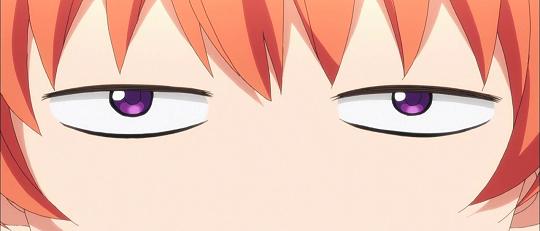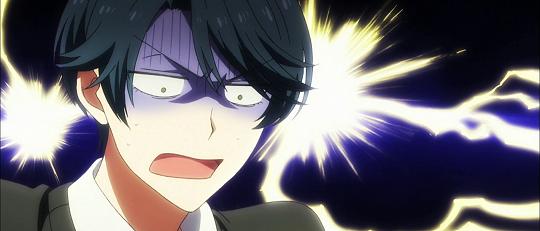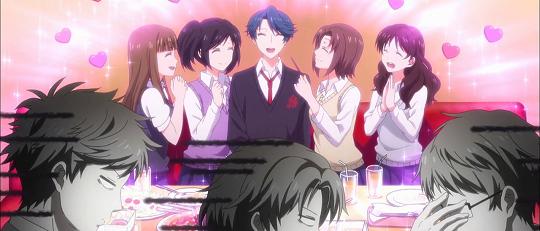As I was sorting through the screenshots for Gekkan Shoujo Nozaki-kun (Monthly Girls Nozaki-kun) I found myself first smirking, then chuckling, laughing, and then finally guffawing so much that I had to rewatch one of the scenes just to provide some kind of closure. It’s that kind of series: where in context it’s funny but in isolation, it’s perhaps even more so.
It starts humbly enough with that most stalwart of high school romance tropes: the confession. In this case by the adorably diminutive Chiyo Sakura to the tall and stoic Umetarou Nozaki. Confusion abounds when he thinks she is asking for an autograph because she’s a fan of his shoujo manga. That’s the hook at least, in reality the series relies on two core jokes that the rest orbit around.
The first is that Umetarou, despite being a shoujo manga author and called “the heart of young girls”, is utterly oblivious to the overtures of Chiyo towards him. The second is the gender inversion of standard shoujo manga character tropes. So, many of Umetarou’s friends end up as inspiration for characters in his manga but with their genders switched; there’s Mikoto (lovingly nicknamed “Mikorin”) who despite being handsome and silver-tongued is easily embarrassed and attention seeking. Or Yuzuki, Chiyo’s friend who is brash and tomboyish but sings like an angel.
That’s a very clinical way of looking at a series which is, by almost all accounts, totally endearing and at times deliriously funny. I’ve said before that light comedies are difficult to write about because humour is often very personal, and with exception, the genre has a tendency to drive jokes into the ground - and keep digging. Nozaki’s humour works so well because a lot of the situations don’t rely on prior knowledge of the characters or long running in-jokes or, somewhat bizarrely, on you being in on the joke of the characters being parodies of shoujo manga standbys.
It often helps but is never critical to being swept up in the infectious happiness of the show or its lead Chiyo. GIFs and video clips abound then, but the real measure of the humour is how effortless it all feels. There are no strained situations or languorous conversations, every episode moves along with a pleasing clip that makes the ending credits feel like they come too soon until the ache in your facial muscles reveal you’ve been grinning since the moment the episode started.
It seems odd to praise the universality of the humour when the concept of the series - a high-school student working on a romantic manga - is going to be, for a large portion of the audience at least, entirely alien. There are interesting snippets that come along with this setup: “beta” was certainly a new term for me just as the practice of layering on screentone was entirely unknown step of the process; but the underlying message is that it’s the characters not the circumstances that make this series so great. We don’t need to know the minutiae of the job that Ken, Umetarou’s editor, performs only that the juxtaposition between their personalities works.
Accompanying all that humour and character work is animation by studio Dogakobo that simultaneously manages to be wonderfully expressive - Chiyo goes from blushing embarrassment to deadpan incredulity with ease - as well as sporting some wonderful little flourishes. Perfectly matching the series’ cheery demeanour the colours are bright when the plot-driven weather doesn’t dictate otherwise, and the pages of Umetarou’s manga are detailed in all states from rough sketches to white-out laden finals. In short: even if Chiyo is often drawn by fans as the crab-like Pokemon Paras, the series’ animation is in good company with a studio whose past works include Mikakunin, Yuruyuri and GJ-bu.
There isn’t much more to say about a series as broadly funny, good natured and hugely enjoyable as Gekkan Shoujo Nozaki-kun. It’s the type of series that manages to have a hilariously non-conformist confession (at least since Ichigo 100%) alongside the now infamous rodeo scene and still manage to sneak Umetarou into scene transitions without missing a beat. It is, unlike the weirdly anachronistic use of fax machines, bound to become a timeless classic and well worth watching regardless of whether you are a shoujo manga aficionado or still, some what ironically, like the titular Nozaki and romantically oblivious.
















